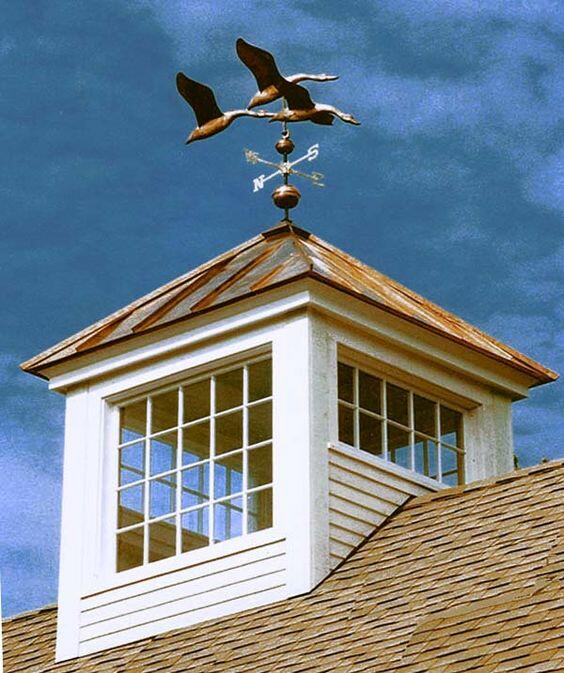#15086. Classic Facade with Cupola Lantern and Decorative Weathervane

The image showcases an architectural element known as a cupola or lantern, positioned on the roof of a building. This structure is a classic example of American colonial architecture, commonly found in the coastal areas of New England and the Eastern Seaboard.
The lantern has a square shape with traditional multi-paned windows on each side, providing good visibility and natural light to the interior space. The roof of the lantern is designed as a four-sided pyramid, covered with copper or another metallic material that has acquired a characteristic color due to environmental exposure. The structure is crowned with a decorative weathervane in the shape of flying geese, emphasizing the connection between the architecture and its natural surroundings.
The white finishing of the lantern's facade contrasts with the darker roofing of the main building, creating a visual accent. Such an architectural element is not only aesthetically pleasing but also functional – historically, lanterns were used for observing the surroundings, especially in coastal homes, as well as for improving ventilation.
When designing the facade of your own home, it's worth paying attention to such historical details that can give a building individuality and character. The use of contrasting materials and colors, symmetrical window placement, and the inclusion of decorative elements reflecting local culture or environment (like the weathervane in the image) are all tools through which an expressive architectural image can be created.